On this trip to Japan where I was accompanied by my friend Y, I finally had a chance to do a Niigata road trip which turned out to be a lot of fun, and I thought I’d share some of my experience driving in Japan and more of my thoughts and tips in case you are thinking about doing your own Japan road trip.
I don’t often drive when I travel because most of the time I travel solo and the cost of renting a car for one person is usually too expensive to justify – it becomes much more affordable the moment you can split the costs between two or more people, but for a solo traveller it’s usually much cheaper to take the bus or train instead (like how I navigated Jeju Island without a car).
This post talks more about planning for a Japan road trip and the nitty gritty/considerations of renting and driving in Japan. I will have other posts covering what I actually did and saw in Niigata separately, or check out my IG story highlights for snippets of my trip.
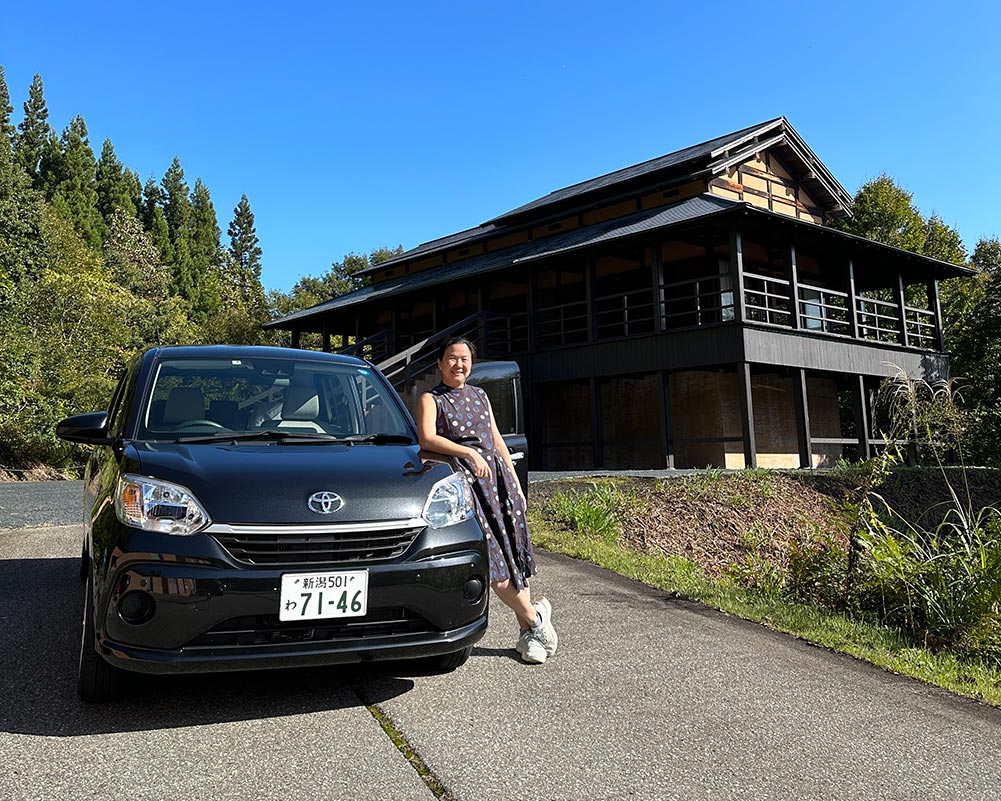

Why drive in Japan?
Japan outside of the main cities like Tokyo can be pretty rural. I’ve mostly navigated Japan in the past with its excellent train network as well as buses and ferries, but on this particular trip, I was on the hunt for Niigata’s hidden gems for my collab with Income which meant I was definitely going to go to some out of the way spots and up against time constraints.
While Niigata is served by both the Shinkansen and smaller local railways, many of the sights to see around here are just not easily accessible except by road. Getting between the cities was also complicated by the different train lines – the route I needed to take in particular from Matsumoto to Niigata City was particularly convoluted – I had to take 3 different trains!
On Sado Island which is not a particularly small island (unlike Jeju’s Udo Island where I could ride an e-bike instead of driving for example), the car was also essential because the only other alternative was the local bus which had pretty sparse timings.
All in all, I definitely enjoyed this Niigata road trip a lot. Japan is a great place to drive and while I would still avoid driving anywhere too crowded like Tokyo or other main cities, being able to head to offbeat spots on my own time and not have to worry about lugging my bags around was a nice change.
P/S: If you’re not a driver but still want to travel Japan by road? Drop a note to my friend R at Wakuwaku tours – she brought us around on one day and is very knowledgable about things to do in Japan, and introduced a lot of the cool sights that you can see in the Niigata hidden gems post like the Yukimuro and Ponshukan (see some IG highlights). You can drop her an email at [email protected] for more. She’s a friend and brought us around for free but I highly recommend her to anyone looking for a good driver + tour guide. After a week of driving, it was nice not to have to think about navigation, have her explain all the Japanese signs and drink all the sake I wanted to without worry!


My experience driving in Japan
Planning the route
I flew in and out of Narita Airport and spent 7 days travelling around Matsumoto (Nagano), Sado Island and Tokamachi in Niigata.
I briefly considered driving up to Matsumoto from Narita Airport, but we were flying in on a red eye and I didn’t want to spend my first few sleep-deprived hours in Japan trying to figure out driving, so I took the train to and from Narita/Tokyo.
The initial plan was to rent a car for the full 7 days from Matsumoto and return in Tokamachi, but it turns out the car ferry from Niigata to Sado Island was pretty expensive – transporting the car alone was going to add another $200-$300 which really made no sense at all, so we ended up doing 3 car rentals:
- Matsumoto – Niigata City (2 days) – we visited Azumino, Asama and then drove to Niigata City to catch the ferry to Sado Island.
- Sado Island (2 days) – we picked and returned the car at Ryotsu and drove mostly around the west/southwest of the island.
- Niigata City – Tokamachi (3 days) – we picked up the car in Niigata City and headed down to Tokamachi and went art hunting, exploring Tokamachi City, Matsunoyama, Matsudai and some other spots before returning the car in Tokamachi.
I’m working on separate posts with details about what exactly I did on my trip, stay tuned. Read my hidden gems in Niigata post in the meantime.
Driving in Japan
Right hand drive: First off, Japan’s driving is left hand drive, which is the same side as Singapore and the UK for reference (different from the U.S.), so no disorientation for me!
Polite drivers: Japan’s roads were generally well maintained, and their drivers are also as polite as their society generally is. Look, I’m a Singaporean driver and we are pretty impatient and selfish and not the greatest with road etiquette, so it’s nice that when you signal in Japan, people actually slow down to let you in instead of speeding up and blocking you.
People were generally going pretty fast on the highways. The cars I drove weren’t that powerful so I mostly kept to the left side.
A note for Niigata if you are driving around at night – the town areas are very much countryside so there are very few street lights. This does take some getting used to if you’re from Singapore (we have SO MANY street lights). Shout out to my friend Y who was more confident than me in the dark and did most of the night drives.


Total cost of road trip
Here’s the breakdown of what it cost to drive on this 7 Day Niigata Road Trip
- Car rental: 20,394 JPY + 21,670 JPY + 30,580 JPY = 72,644 JPY (inclusive of full coverage insurance + ETC card rental)
- Petrol + Parking + ETC fees: 12,701 JPY
This works out to a total of 85,345 JPY and split by 2 pax it was about 42,673 JPY per person. Further splitting this cost across 7 days of travel works out to about 6,096 JPY per day (about S$55).
I worked out the cost of driving vs taking trains around, and honestly there wasn’t that much difference in cost, and the pros of driving (flexibility, no time schedules) far outweighed trains + other transport.
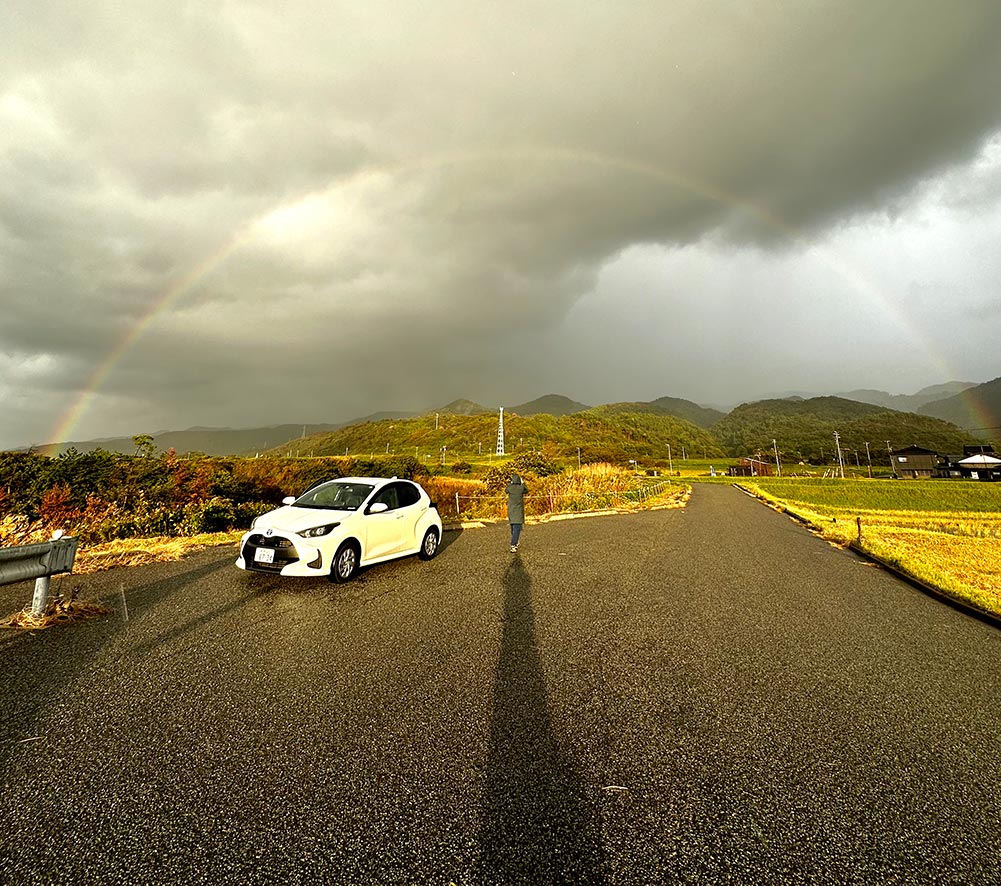

Essentials for driving in Japan
Here are the things that you need to have for your Japan road trip.
International Drivers Permit (IDP)
This is a MUST for most international folk driving in Japan. On my career break leg in Japan, I didn’t have an IDP and there was absolutely no way to rent a car at all because they are super strict about it.
Where to get IDP
For Singaporeans, getting your IDP usually requires a quick trip down to an AA outlet. Fill up a form on site, they’ll snap a photo of you too, wait a short while and if there’s no queue you can get your IDP done in 10 minutes. It costs S$20.
You can also get it done online at AA’s website but you’ll need to give yourself 5 days minimum for them to post it to you – I think it’s much easier just swinging by the AA outlet directly.
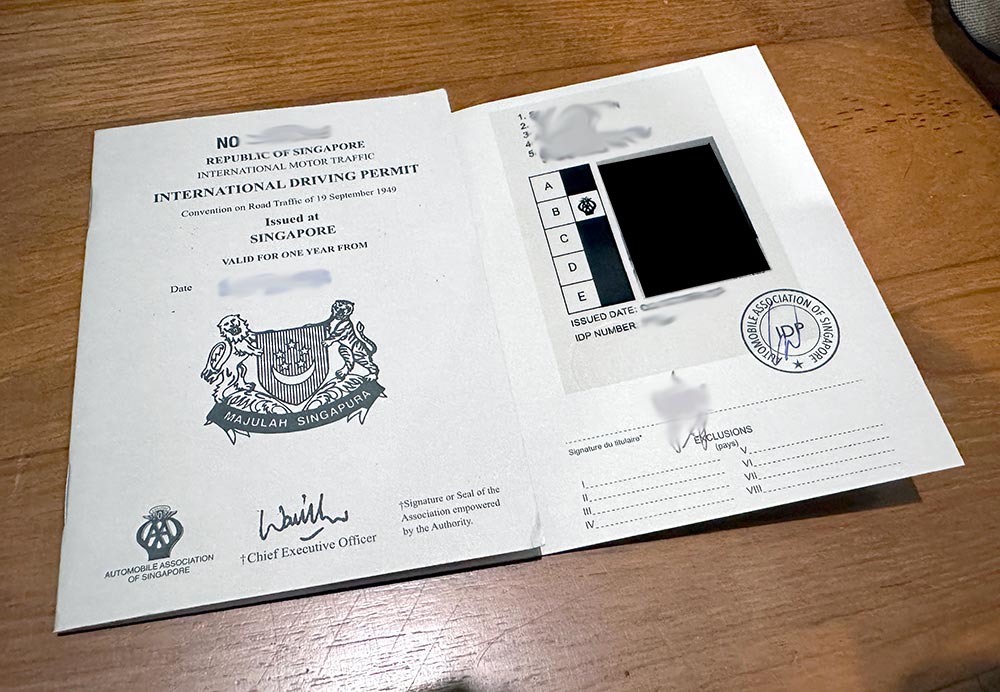

Local Drivers License + Passport
Bring along your local driver’s license and your passport – they usually made copies of my passport and my IDP as I was the main person who booked the car.
You’ll need to have at least the driver’s licenses, but they may or may not require any other drivers to show their licenses too – only 1 of the 3 places made a copy of my friend’s licenses too since she was also driving. They don’t ask how many drivers there are in the booking anyway so it really depends.
ETC Card
ETC Card is what Japanese use to pay the road tolls automatically along the expressways.
For Singaporeans, this is something akin to the new generation ERP Cashcard that is being introduced but in a much more elegant set up as the ETC card is usually inserted into a slot somewhere under the steering wheel. There should be a green light if you put it in properly, otherwise ask the service staff to help you insert it in when you pick up the car.
Where to get ETC card
This card can be rented from the car rental company – you’ll want to include this in your online booking to guarantee you have one for your car in case there are many other bookings.
You technically don’t need an ETC card as you can pay tolls by cash when you exit the expressway, but this makes it so much faster to get through the toll gates – you don’t have to join a specific queue and you don’t have to spend time making payment as you only pay the accumulated amount at the end of the rental when you return the car to the rental company. Also the toll rates for ETC are discounted as compared to paying in cash, so you’ll save a little as well.
Sado Island didn’t have any highways so no ETC card was needed there, but I did use the ETC while in Matsumoto and Niigata.
Unlimited data plan + Google Maps
All the cars we rented came equipped with GPS systems – Toyota even lets you specify what language you want the GPS system in and English is an option.
However, we found it easier to use our phones and just use Google maps instead, which was fairly accurate most of the time. The GPS was useful however in trying to figure out which road exactly to turn into which can be confusing in a situation where there are several small turnoffs close together.
Where to get unlimited data eSIM for Japan
I used this eSIM from Softbank [Klook affiliate link] with unlimited data + no throttling for my trip, and my friend used this other Japan eSIM [Klook affiliate link] which was cheaper but had a 1GB per day throttle limit.
Both cards worked very well even out in the countryside of Niigata. Of course there were a few occasions where there was just no signal whatsoever, but neither of the cards had ‘bad’ signal or pick up. Would recommend to anyone who needs a Japan eSIM.
How to rent a car in Japan
I used Toyota Rent a Car in 3 different cities, and while the general car rental procedure was basically similar, each office has slightly different rules. For example, one wanted me to make payment upfront, but another required payment only upon return. But generally here’s what you can expect when renting a car in Japan.
1. Make an online reservation
Book early: I highly recommend making a reservation online as early as you can because there is a good chance they will be fully booked closer to date and on weekends, and won’t have any room to take walk-ins. You don’t make any payments until you actually visit the office and pick up the car, so the online reservation guarantees you will have a car for your trip.
Where to book: My go-to site to rent a car was Toyota Rent a Car トヨタレンタカー. I like their site because it was all in English and I personally found it the easiest to use and understand. I could also make changes to my bookings in terms of pick up and return locations and times quite easily up to 7 days before my trip.
There are various car rental companies you can check out as well like Nippon Rent a Car, Nissan Rent a Car, Tabirai… if you can read Japanese there are several other car rental options which might be cheaper, but may require you to be a Japanese native to use.


What car to book: Since it was just 2 of us, I usually picked the smallest car available for the cheapest cost. In Toyota’s case, this was usually the Mini/Compact C0 or C1 class (1,000 cc) which is what we jokingly called the ‘obasan car’ (Japanese for grandma) because they were really about getting you around and not the power/sleek look. I swear one of our cars was definitely geared for older folk because the buttons and interface was a lot simpler and larger than your usual high-tech look – it was very comfortable though.
The cars we got were well maintained, clean and pretty good drives all around, though definitely not that powerful. I could hit 120KMH+ on the highways (like, everyone was driving at that speed) but it was full-on pedal to the floor. Size wise because these small Japanese cars were mostly hatchback, there’s not a lot of boot space but we could just about squeeze 2 luggage bags in some of the boots, otherwise we used the backseat as well.
Know your route: You’ll need a rough idea of your itinerary if you plan to return the car in a different place from where you start. Note that there will be additional charges on top of the car rental charge for returning to a different location.
Booking tip: the cost of the car rental is usually calculated in x-hour blocks. Toyota’s pricing is calculated in 3-hour blocks so sometimes playing around with the exact pick up and return timing may save you a bit of money.
Pick up the car + car inspection
Paperwork: After you’re in Japan, head to the office to pick up your car. I typically rocked up and showed the staff my email confirmation with the booking number, and they would pull up the details of my booking and check + make copies of my license.
Inspection: After settling the paperwork, they would take me out to see the car and we would do a quick inspection. This is the time that you point out any defects you see no matter how big or small – this is just in case they decide to slap you with a damage repair fee at the end when you return the car which was an existing defect. All this is marked on a paper by the staff. I usually snap a picture or two myself just in case.
Ask questions: When you get the key, take the chance to try starting and switching off the engine. In case you run into any problems, you can ask the staff how to solve it there and then, even for small things like figuring out where your gas tank is, where the ETC card slot is and where your wipers and lights are.
Location: Another reason I went with Toyota Rent a Car was because they had a lot of locations, and the ones we went to in Matsumoto, Niigata City and Tokamachi were all very close to the JR Train Station. In Sado Island the pick up booth was on the ground floor of the ferry terminal building.
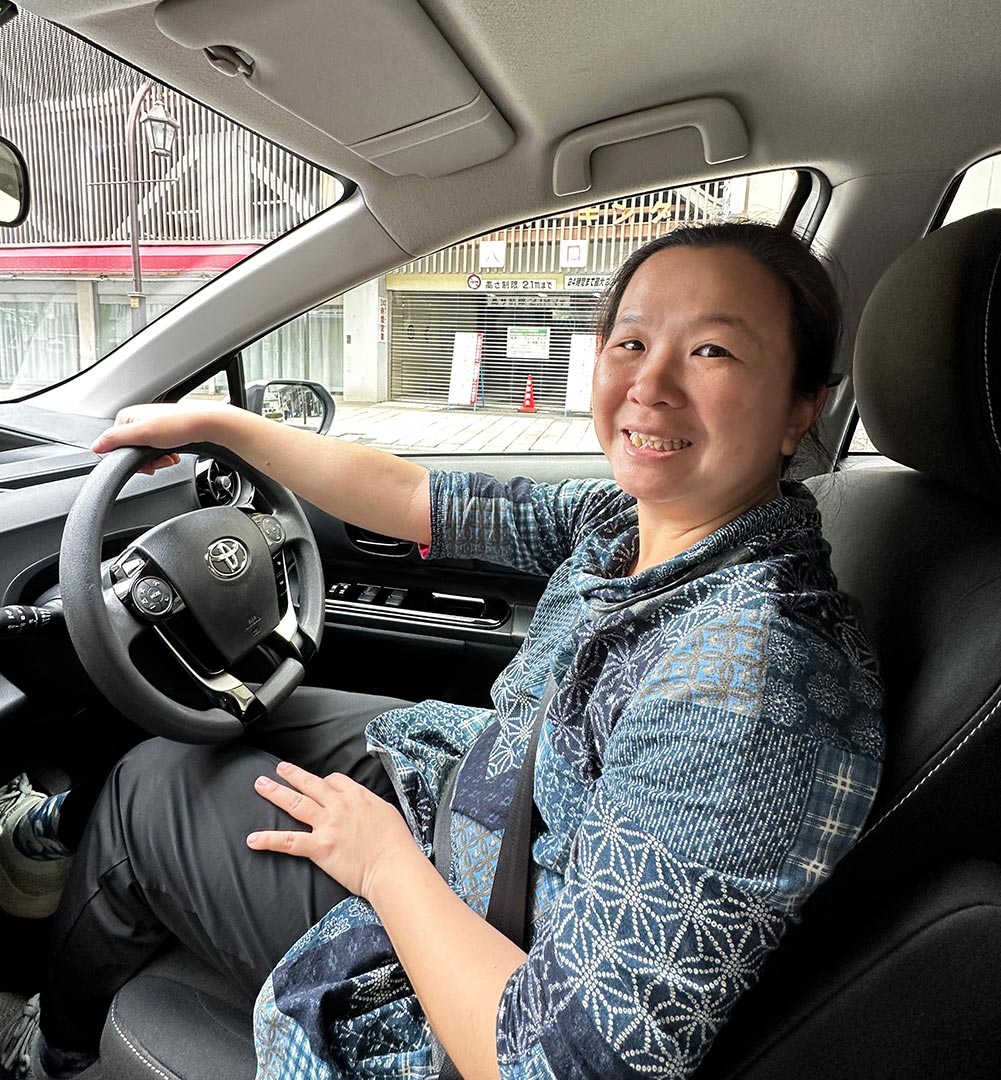

Returning the rental car
After you’ve had an awesome time driving on your Japan road trip, it’s time to return your car! It’s best to swing by the nearest petrol station and top up to full tank before returning your car. The company may ask for you to produce a letter/proof that you’ve filled the tank – just show them your receipt from the petrol station.
When you return the car, they’ll usually do a cursory inspection to make sure there are no damages and settle any charges that you haven’t already made payment for like the ETC card.
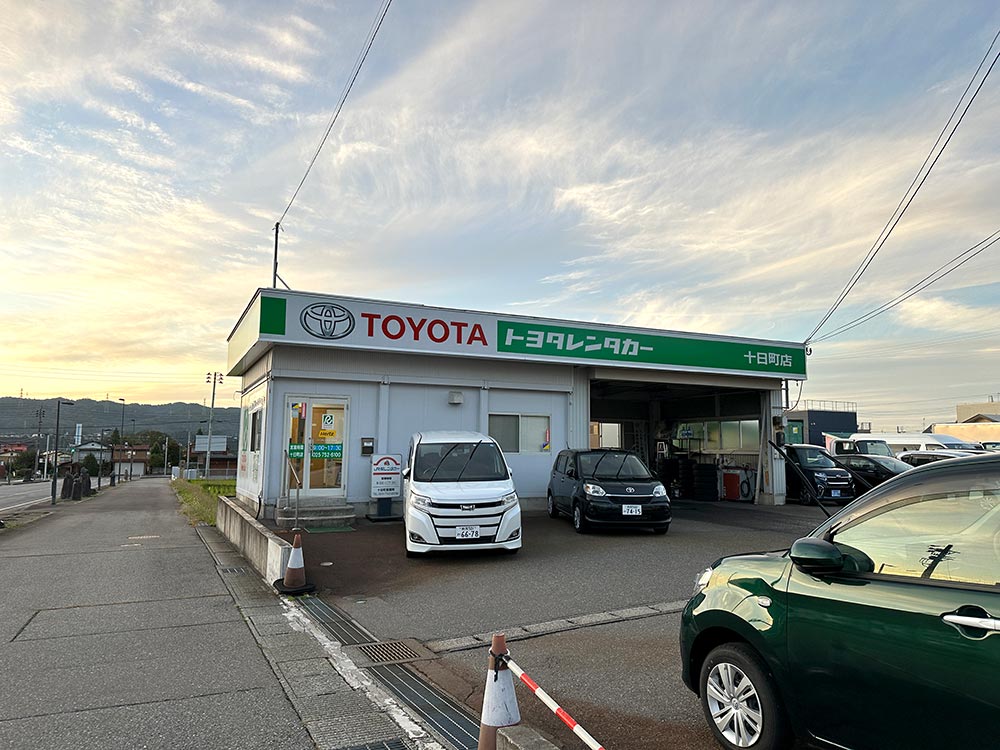

Planning for a road trip vs taking public transport
Some of my personal thoughts now that I’ve done this Japan road trip and what I might do different in future.
Accommodation
My typical style of travelling is basing myself in a spot for at least 2-3 nights, and then exploring around the area before moving on, which is what I did on this trip as well, but on hindsight I think
If you plan to cover a wide area, map out your route and plan to explore areas in a day without backtracking and spend single nights in accommodation. This way you save on making the long return trips to and from your base accommodation.


Parking
Because we were driving in rural areas of Niigata most of the time, we never had to pay for parking except for the one time we picked up the car in Matsumoto City and parked it overnight for an early morning drive out the next day.
Some hotels/guesthouses do provide free parking which is something to consider in your bookings. My Matsumoto hotel didn’t have free parking but had an arrangement with a parking garage 10 minutes walk away with a flat rate for 24 hours, while I had free parking in all my other guesthouses.
Refueling
You will need to top up fuel before returning the car to the rental company. Some places asked us for a letter certifying that the tank is full – just show them the receipt from the last gas station you pumped at and that should be sufficient.


Have any questions about driving in Japan? Drop me a note in the comments and I’ll see how I can help! If not check out some of my other Japan posts for more:


